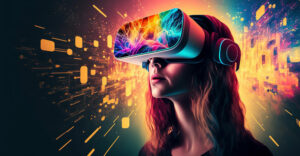Magic Leap on Tuesday announced that Google was the lead investor in a US$542 million round of Series B funding for its secret endeavors.
Also participating in the financing round were Qualcomm, Legendary Entertainment, KKR, Vulcan Capital, Kleiner Perkins Caufield & Byers, Andreessen Horowitz and Obvious Ventures.
Sundar Pichai, senior vice president of Android, Chrome and apps at Google, will join Magic Leap’s board of directors. Paul Jacobs, executive chairman at Qualcomm, and Don Harrison, vice president of corporate development at Google, will join the board as observers.
“Magic Leap is going beyond the current perception of mobile computing, augmented reality and virtual reality,” said Rony Abovitz, Magic Leap’s president, CEO and founder. “We will revolutionize the way people communicate, purchase, learn, share and play.”
Magic Leap is valued at just under $2 billion, according to The Wall Street Journal.
Wearable Technology
Details are scarce about Magic Leap’s forthcoming products, but reports suggest the innovations behind them involve proprietary wearable technology.
Specifically, the Florida-based company is said to be developing an eyeglasses-like device that can project computer-generated images over real-life settings.
Magic Leap’s first product projects accurate images onto the eyes, enabling users to see virtual 3D objects as if they were part of the real world, the WSJ reported. Its promotional clip portrays a tiny, animated elephant moving in someone’s hands.
In the future, potential applications could include new formats for movies and video games, as well as new ways for patients and doctors to interact, and new possibilities for long-distance communications.
Other senses, such as touch, eventually will be included, the WSJ reported.
Abovitz last year sold Mako Surgical Corp. for $1.65 billion.
Facebook earlier this year paid $2 billion to buy virtual reality headset maker Oculus Rift.
Glass 2.0?
“This definitely sounds very cool,” said Tuong Nguyen, a principal research analyst for consumer tech and markets at Gartner.
“The details are sparse on what these guys do and how they do it,”he told TechNewsWorld. “What I do like is the concept. This is the direction I was hoping Google would head in” for a sort of “Glass 2.0.”
The current state of Google Glass “is fine, and has opened the door to the potential cool things that can be done,” but there’s still much more potential, Nguyen added.
‘A Lot of Question Marks’
It’s worth noting the involvement not just of Google but also Qualcomm in Magic Leap’s funding, Nguyen pointed out.
Qualcomm already has an augmented reality platform of its own, dubbed “Vuforia,” he said, “so I certainly see some potential ties there.”
The descriptions so far “remind me of stuff I’ve seen already in terms of using not glasses frames but contact lenses,” Nguyen said.
Within that category, he continued, there are two types of contacts being researched. The first involves embedding an LCD or tiny screen within the contact lens itself; the second uses the contact to help focus the wearer’s eyes on images being projected onto a device, like Google Glass, which serves as a viewing screen.
“There are a lot of question marks,” Nguyen remarked. “I’m not a physician and can’t say if there are health implications, but it definitely sounds interesting. I can see why Google and Qualcomm are both interested.”
Modern Wizards
Descriptions of Magic Leap’s technology so far call to mind phrases such as “mobile wearable,” “augmented reality,” “virtual reality” and “content ecosystem,” said Roger Kay, founder and president of Endpoint Technologies Associates.
“So, it’s in the direction of Google Glass, where visual and auditory input and output, as well as overlay, are pulled together in an intuitive way,” he told TechNewsWorld.
“Sounds like they have a good API that combines all that functionality on a Google platform and hope to draw in partners,” Kay added — “‘modern wizards’ notwithstanding.”






















































